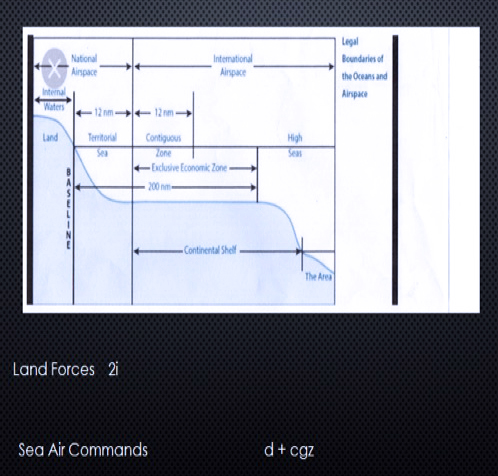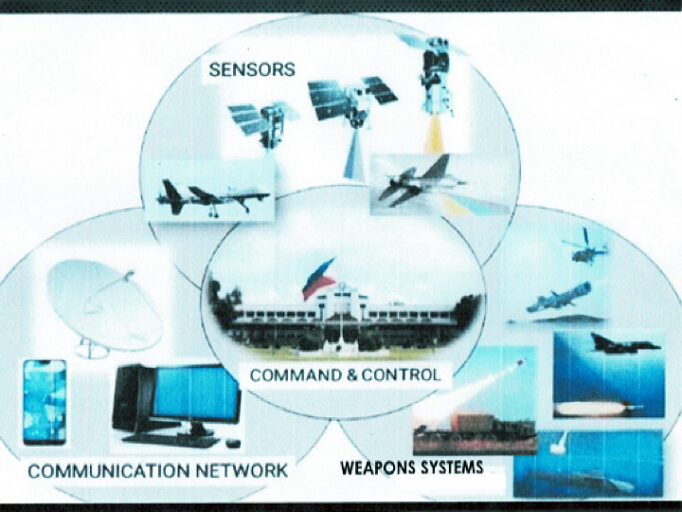The 2023 budget deliberations and recent legislative hearings once more brought to the fore their observation about our present inability to confront intrusions into the West Philippine Sea and the Philippine Rise. One senator urged “the government to expedite the buildup of defense forces in the WPS.” Another congressman was advocating to stress lethality in the development of this force. These statements were all in line with the President’s statement that “We will never give up a single millimeter of Philippine territory.”
When a Chinese vessel sank the F/B Gem_Ver while anchored in the Recto Bank, the Filipino people made known their sentiments. The Social Weather Station, in its June 2019 survey, reported that 91% of our people want to regain control of islands in the West Philippine Sea.
It also showed that 92% urged government to “strengthen the military capability of the Philippines.” 84% of our people want alliances formed “with other countries that are ready to help us in defending our security in the West Philippine Sea.” The Officer-in-Charge of the Department of National Defense during the DND budget deliberations stated that the Armed Forces of the Philippine (AFP) is one of the weakest forces in the region.
Indeed, there is an urgent need as well as an opportunity to establish a new defense posture for the AFP. This will necessitate an expansion of the AFP operation plan.
Two primordial reasons for our lack of external combat power appear to be: First, our dependence on the U.S. to protect our country externally. Additionally, For 55 years the AFP operational strategy — IPSP code name Katatagan, then Lambat Bitag followed by other code names that were adopted once a new administration took over. It was however mostly focused on counter insurgency.
We hardly developed an external protection capability even after the U.S. pulled out its bases in the country.
The constitution however mandates that “The State shall protect the nation’s Marine Wealth in Its Archipelagic Waters, Territorial Sea, and Exclusive Economic Zone (EEZ) and reserve its use and enjoyment exclusively to Filipino Citizens.”
The Philippine geography shows we comprise 300,000 square kilometers of land area and 2 million sq.km. of maritime area. Our defense plan, therefore, must have both internal and external considerations.
In 2011, the AFP already published its strategic intent aimed at maintaining a “credible deterrent posture” against foreign intrusion or external aggression, and other illegal activities while allowing free navigation. This intent still has to be operationalized.
The Department of Foreign Affairs enunciated in 2018, “the red lines” to prevent any takeover or building of facilities in the Scarborough Shoal, the Spratlys, and other islands within Philippine waters. It sought to protect our people from being deprived of their means of livelihood, and also to secure sources of food and natural resources from the blue economy for the future generations of Filipinos.
We, however, have been wanting in this regard, as we still do not have a credible manner of defense. It is not surprising that the AFP ranked 51 out of 100 countries in one worldwide survey.
It behooves upon us, therefore, to start crafting a more comprehensive operational strategy.
The expanded operational paradigm recommendation is:
Anchored on the formula 21 + D + CGZ, where 21: Address Insurgency + Capability to defend against Invasion; D: Deterrent force Capability to prevent further encroachment; and CGZ: Counter Grey Zone operations to deal with external operations short of war.

A study of Chinese deterrence at the time they were building up a blue water navy reveals an asymmetric strategy developed two decades ago against the fleet of U.S. carrier battle groups which involves controlling the sea from land. They developed a missile umbrella through their anti-access area denial strategy.
We can also adopt this concept.
Our expanded deterrent forces must focus on lethal systems against a surface fleet. There is a need for economy of force modernization. The most effective combination is the use of multi-directional maritime attack tactics combining sea mines, anti-ship missiles launched from land-based aircraft, surface to air batteries, mobile launchers, ship-based missiles, and torpedoes. This system must include new capabilities on ISRT by be the most cost-effective way to utilize what remains of Horizons 2 and 3.

Initially, it requires establishing up to three maritime joint commands, along with the proper equipment and trained personnel. The AFP West Command to cover Spratly’s and WPS; Joint North West Luzon command for Scarborough Shoal and defense of Manila; and Joint North east command to protect the extended Continental Shelf and The Philippine Rise.
In light of the demand for additional Enhanced Defense Cooperation Agreement (EDCA) bases during the review of the Mutual Defense Treaty, we must now ask for the U.S. to develop the deterrent force utilizing Article II of the MDT. Article II states that to effectively achieve the object of this treaty, the two parties separately and jointly by self-help and mutual aid will maintain and develop their individual and collective capacity to resist armed attack. The Philippines must request the U.S. for assistance and financial aid to cover funding of our requirements for deterrence and counter grey zone operations.
We will also need help from other nations, especially if Washington does not come through for us.
We can get part of our needs from our strategic partners, and other allies, such as Japan, South Korea, Australia, India, and the European Union, among others through grants, soft loans, or long-term concessional loans.
There are creative ways to generate funds. We cannot sacrifice our capability to defend and protect our patrimony for reasons of lack of money.
China operates in the South China Sea (SCS) with its maritime fleet called the People Armed Forces Maritime Militia (PAFMM). They call these their Second Navy. These are deployed in close tandem with their fishing fleet that provides a gray zone capability for Chinese maritime law enforcement efforts in the 9-dash line against areas already recognized by UNCLOS and UN arbitration as part of the Philippine EEZ.

This is how they acquire artificial islands and implement their cabbage strategy and salami slicing tactics in operations short of war.
To counter grey zone operations, we must also organize, develop, and maintain air, naval and a coast guard auxiliary. Other bottoms composed of the Bureau of Fisheries and DENR, along with other government bureaus and private air and maritime companies will act as force multipliers.
Protecting our EEZ can be accomplished by expanding our current defense posture with a comprehensive operational concept, by not limiting it to internal security but likewise addressing the imperative of external defense.
This is the first step to have a minimum and credible unilateral capability to defend our territory.
All of these become mandatory due to the bill requiring a Comprehensive Review of the Executive Branch (CREB). This will authorize the President to rightsize the operation of the Executive Branch by analyzing and designating the appropriate roles, mandates, structure, functions, size systems, and processes of the government agencies to ensure effective, responsive, and efficient service delivery.
More importantly, the protection of our energy sources to fill up the loss of Malampaya makes these interventions crucial for the country. We need a protective force for our plans in the exploitation of the Reed Bank, Philippine Rise, and other patrimonial assets. We can do no less.
Even if we are a small state, we must show resolve in protecting our EEZ and ECS ourselves through deterrence-oriented equipage, and joint operations. This is the only way for us to insure our food and energy security and recover our national pride and dignity to defend our patrimony.
References:
- New Navy Fighting Machine in the South China Sea by Dylan Ross and Jimmy Harmon, 2012
- Rise of China in Asia – Security Implications Edited by Caroline Pumphrey, January 2002
- Joint Operational Warfare: Theory and Practice by Milan N. Vego
- Chinese Maritime Militias: A grey zone Force by Jeremy Oliver, 2019
- Chinese Anti – Ship Ballistic Missile Development by Andrew Erickson, 2013
- Hybrid and Asymmetric Warfare: What to do? by Swedish Defence University, Stockholm Sweden
- Joint Publication JP 3-32 Joint Maritime operation, U.S. Government, Sept. 2021
- Air Force Doctrine Document 3-1 Air Warfare by USAF 2000
- National Security Policy 2017-2022
- net
- Philippine Star
- You tube
About the Author
MGEN Melchor P Rosales is with the (PMA) Philippine Military Academy Class of 1968. He earned an MBA from Ateneo, and a Masters in Global Affairs from Fletcher School, Tufts University; and attended CGSC and AFP CGSC in 1998. Rosales was an Air Attaché assigned to the Philippine Embassy in Washington DC; a former Undersecretary of (DILG) Department of Interior and Local Government, and Administrator of the Office of Civil Defense. Rosales is a multi-awardee in military operations.
